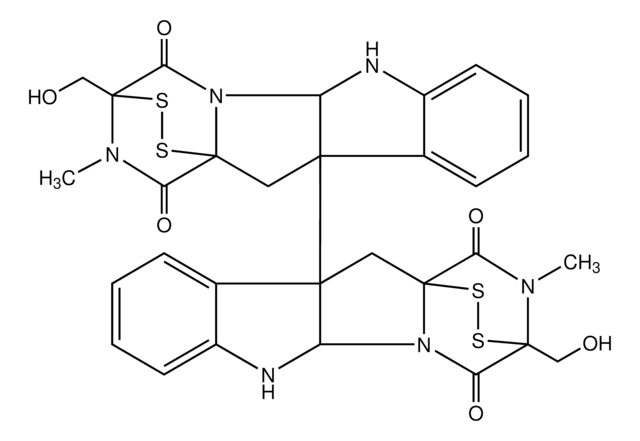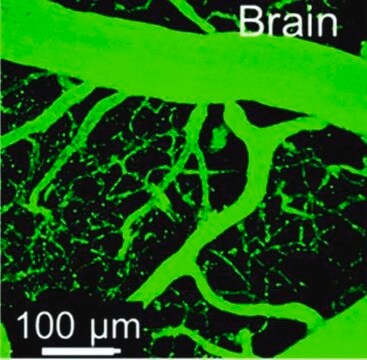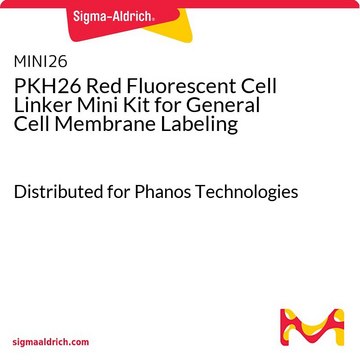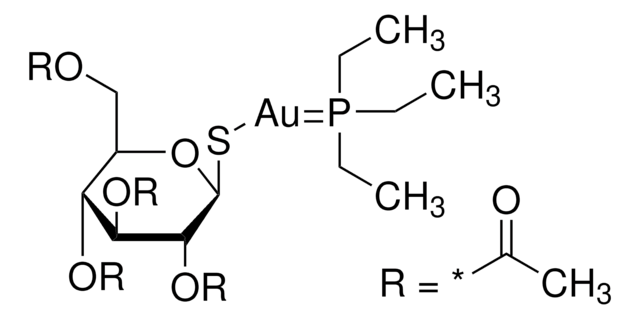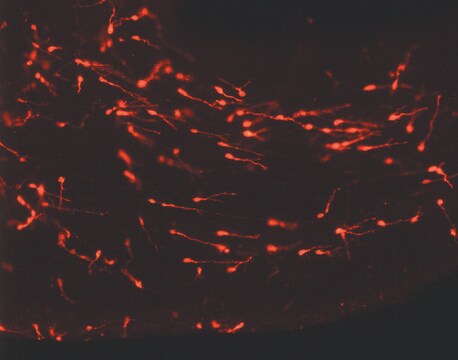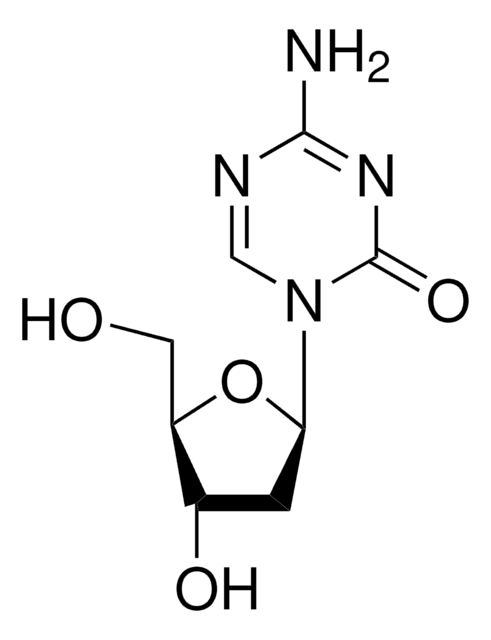C9623
Chetomin
from Chaetomium cochliodes, ≥98% (HPLC)
Synonyme(s) :
Chaetomin, NSC 289491
About This Item
Produits recommandés
Source biologique
Chaetomium cochliodes
Niveau de qualité
Essai
≥98% (HPLC)
Forme
powder
Solubilité
DMSO: soluble
acetone: soluble
ethyl acetate: soluble
Température de stockage
−20°C
Chaîne SMILES
S1SC9(N(C(=O)C1(N(C9=O)C)CO)C)Cc2c3c([n](c2)C54C(N7C8(SSC(N(C8=O)C)(C7=O)CO)C5)Nc6c4cccc6)cccc3
InChI
1S/C31H30N6O6S4/c1-33-25(42)30(15-38)34(2)23(40)28(33,44-46-30)12-17-13-36(21-11-7-4-8-18(17)21)27-14-29-24(41)35(3)31(16-39,47-45-29)26(43)37(29)22(27)32-20-10-6-5-9-19(20)27/h4-11,13,22,32,38-39H,12,14-16H2,1-3H3
Clé InChI
ZRZWBWPDBOVIGQ-UHFFFAOYSA-N
Actions biochimiques/physiologiques
Mention d'avertissement
Danger
Mentions de danger
Conseils de prudence
Classification des risques
Acute Tox. 3 Oral
Code de la classe de stockage
6.1C - Combustible acute toxic Cat.3 / toxic compounds or compounds which causing chronic effects
Classe de danger pour l'eau (WGK)
WGK 3
Point d'éclair (°F)
Not applicable
Point d'éclair (°C)
Not applicable
Faites votre choix parmi les versions les plus récentes :
Déjà en possession de ce produit ?
Retrouvez la documentation relative aux produits que vous avez récemment achetés dans la Bibliothèque de documents.
Les clients ont également consulté
Notre équipe de scientifiques dispose d'une expérience dans tous les secteurs de la recherche, notamment en sciences de la vie, science des matériaux, synthèse chimique, chromatographie, analyse et dans de nombreux autres domaines..
Contacter notre Service technique

